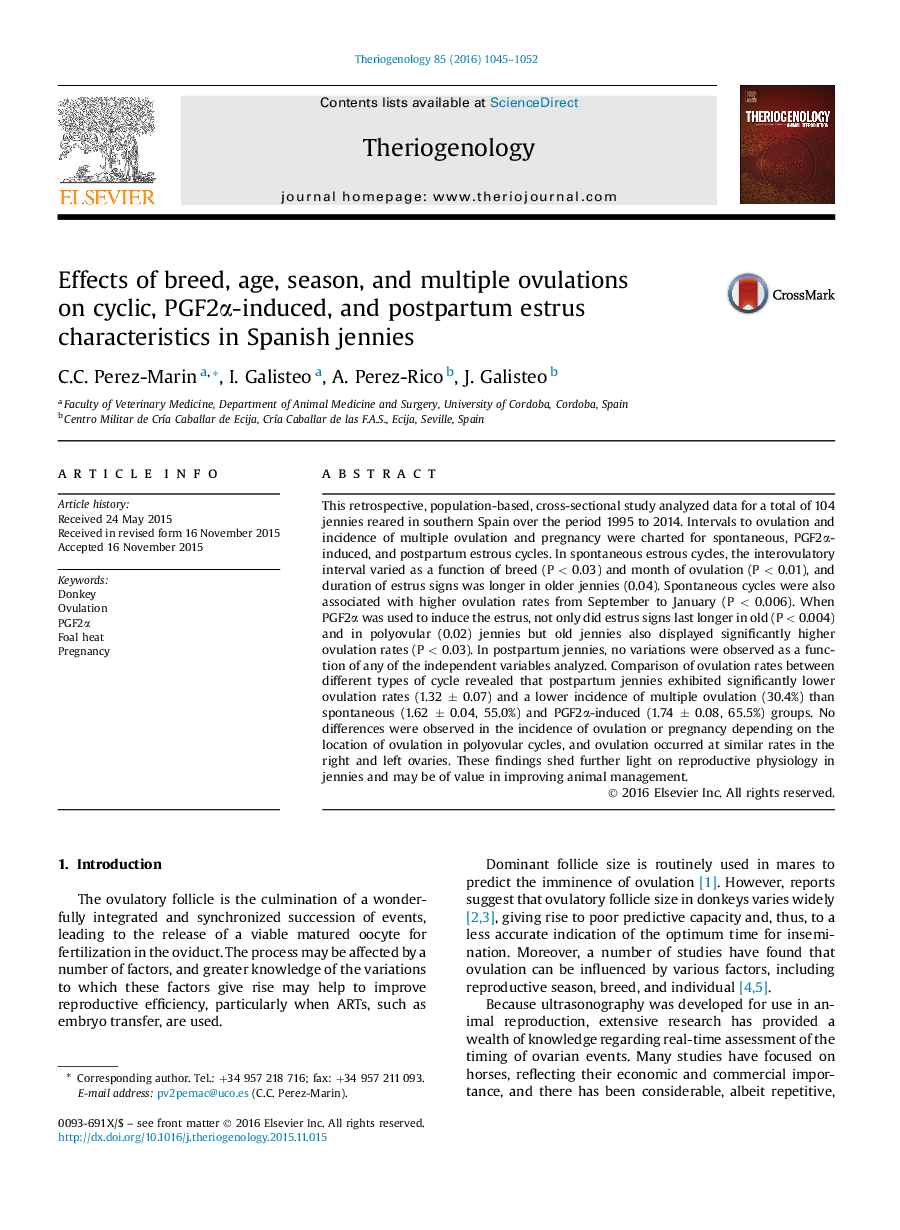| Article ID | Journal | Published Year | Pages | File Type |
|---|---|---|---|---|
| 2094866 | Theriogenology | 2016 | 8 Pages |
This retrospective, population-based, cross-sectional study analyzed data for a total of 104 jennies reared in southern Spain over the period 1995 to 2014. Intervals to ovulation and incidence of multiple ovulation and pregnancy were charted for spontaneous, PGF2α-induced, and postpartum estrous cycles. In spontaneous estrous cycles, the interovulatory interval varied as a function of breed (P < 0.03) and month of ovulation (P < 0.01), and duration of estrus signs was longer in older jennies (0.04). Spontaneous cycles were also associated with higher ovulation rates from September to January (P < 0.006). When PGF2α was used to induce the estrus, not only did estrus signs last longer in old (P < 0.004) and in polyovular (0.02) jennies but old jennies also displayed significantly higher ovulation rates (P < 0.03). In postpartum jennies, no variations were observed as a function of any of the independent variables analyzed. Comparison of ovulation rates between different types of cycle revealed that postpartum jennies exhibited significantly lower ovulation rates (1.32 ± 0.07) and a lower incidence of multiple ovulation (30.4%) than spontaneous (1.62 ± 0.04, 55.0%) and PGF2α-induced (1.74 ± 0.08, 65.5%) groups. No differences were observed in the incidence of ovulation or pregnancy depending on the location of ovulation in polyovular cycles, and ovulation occurred at similar rates in the right and left ovaries. These findings shed further light on reproductive physiology in jennies and may be of value in improving animal management.
